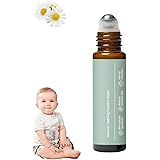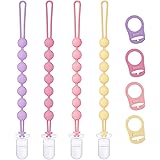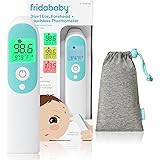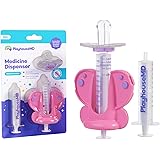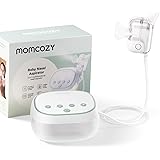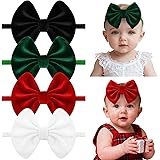The journey into motherhood and parenthood is often described as a whirlwind of new experiences, challenges, and immense joy. As the insightful video above highlights, while many may say it’s “no rocket science,” the truth is that tending to your precious little one requires careful consideration of countless small details. Among these, mastering the art of the baby bath stands out as a fundamental skill for all new parents.
A baby’s skin is incredibly delicate and sensitive, making bath time a ritual that demands both gentleness and the right baby care products. It’s more than just getting clean; it’s an opportunity for bonding, sensory development, and establishing a comforting routine. Let’s delve deeper into creating a safe, serene, and successful bath time experience, expanding on the valuable tips shared in the video.
Preparing for Your Baby’s Bath Time: The Foundation of a Gentle Routine
Preparation is paramount when it comes to bathing an infant. A well-prepared environment ensures both safety and comfort for your little one. Before you even think about water, consider these crucial steps:
- Timing is Everything: As mentioned in the video, avoid feeding your baby immediately before bath time. A full tummy can lead to discomfort or spitting up, making the experience less enjoyable for everyone. It’s often recommended to wait at least 30 minutes after a feeding, or to bathe your baby before a feeding when they are alert but not overly hungry.
- Sanitize Your Space: A clean environment is vital for your baby’s delicate immune system. Always sanitize the bathing area thoroughly before use. This includes the bathtub, surrounding surfaces, and crucially, your hands. Washing your hands with soap and water ensures you don’t transfer any germs to your baby.
- The Perfect Water Temperature: This is a non-negotiable safety aspect. The video rightly emphasizes checking the water temperature. According to the American Academy of Pediatrics, the ideal bath water temperature for a baby should be around 98 to 100 degrees Fahrenheit (37-38 degrees Celsius). Water that is too hot can scald quickly, while water that is too cold can lead to hypothermia. Use your elbow or wrist, as demonstrated, to gauge the temperature, or even better, invest in a reliable bath thermometer for an accurate reading.
-
Gather All Your Supplies: The video suggests having all supplies handy, and this cannot be stressed enough. Never leave your baby unattended, even for a second, to grab a forgotten item. Lay out everything you’ll need within arm’s reach:
- Soft cotton balls for eyes and private parts
- Clean face cloths or washcloths
- A soft, absorbent towel (preferably one with a hood)
- The chosen gentle cleansing products
- A fresh diaper and clothes for after the bath
Selecting the Safest Baby Care Products: Nurturing Sensitive Skin
Choosing the right baby care products is a significant decision for new parents. A baby’s skin is five times thinner than an adult’s, making it more susceptible to irritation and absorption of chemicals. The video highlights the importance of “made safe without any toxics and with nature’s goodness,” which points to a crucial trend in infant hygiene.
When selecting products for your baby’s delicate skin, prioritize those that are:
- Hypoallergenic: Formulated to minimize allergic reactions.
- Fragrance-Free: Artificial fragrances can be a common irritant for sensitive skin. Even “natural” fragrances can sometimes cause issues.
- Dye-Free: Dyes serve no purpose in cleansing and can cause irritation.
- pH-Balanced: Products that match the natural pH of a baby’s skin (typically slightly acidic) help maintain the skin’s protective barrier.
- Free from Harsh Chemicals: Avoid ingredients like parabens, phthalates, sulfates (SLS/SLES), mineral oils, and strong preservatives. A study published in the journal *Pediatric Dermatology* highlighted that certain chemicals in baby products can potentially disrupt hormone function and contribute to skin sensitivities.
- Organic and Natural: Products made with organic, plant-derived ingredients are often gentler and less likely to contain synthetic additives. The video specifically mentions Mamaearth’s baby care cleansing products, emphasizing their organic ingredients and safety for the baby. Brands like this often focus on harnessing the power of nature to provide effective yet mild infant hygiene solutions.
For the first few weeks, plain warm water might be sufficient for a newborn. As babies get older and more active, a mild, tear-free baby shampoo and body wash for babies become essential for thorough gentle cleansing.
Gentle Bathing Techniques for a Soothing Baby Bath Experience
Once your area is prepped and your baby care products are at hand, it’s time for the actual bath. Remember, this isn’t just a task; it’s a sensory experience for your baby.
- Maintain Connection: The video correctly advises talking or singing to your baby throughout the bath. Babies respond positively to sound and parental reassurance. Studies in developmental psychology show that consistent, gentle vocalization from parents helps develop a strong emotional bond and provides a sense of security for the infant, even during new experiences like a newborn bath.
- Head First, Gently: Start by gently washing the baby’s head with a small amount of mild, tear-free baby shampoo. Support their head and neck firmly. Gently massage the scalp, being careful around the soft spots (fontanelles). Rinse thoroughly with a cup of warm water, tilting their head back slightly to avoid getting soap in their eyes.
- Clean the Eyes and Face: Use a separate, damp cotton ball or corner of a washcloth for each eye, wiping from the inner corner outwards. Then, use a fresh, damp washcloth to gently wipe their face.
- Body Wash Application: Apply a small amount of baby body wash onto a soft washcloth or your hand. Gently wash the baby’s body, paying special attention to creases like the neck, armpits, behind the knees, and diaper area. Always wash the genital area last, wiping front to back for girls.
- Rinsing Off: Carefully rinse all soap from your baby’s body with warm water. Ensure no residue remains, as this can irritate sensitive skin.
- Support and Security: Throughout the entire bath time routine, maintain a firm but gentle grip on your baby. Their slippery skin can be tricky to hold, so confidence and steady hands are key.
Post-Bath Comfort and Care: Extending the Warmth
The ritual doesn’t end when the water drains. Post-bath care is just as important for keeping your baby comfortable and their skin healthy.
- Immediate Wrapping: As soon as the bath is over, wrap your baby immediately in a soft, clean, pre-warmed towel. A hooded towel is ideal for keeping their head warm. This prevents rapid heat loss and provides immediate comfort.
- Gentle Drying: Pat your baby’s skin dry, rather than rubbing, especially in the creases and folds where moisture can linger and lead to irritation. Ensuring these areas are completely dry is crucial for preventing conditions like diaper rash or intertrigo.
- Moisturizing (Optional but Recommended): For babies with dry skin or eczema, applying a gentle, fragrance-free baby lotion or cream immediately after patting dry can help lock in moisture. Always choose products designed specifically for babies.
- Dressing for Warmth: Dress your baby quickly in comfortable, clean clothes to maintain their body temperature.
Safety First: Ensuring a Secure Baby Bath Experience
Beyond the steps of bathing, underlying safety measures are non-negotiable. Every new parent should adhere to these guidelines for child safety during bath time:
- Never Leave Your Baby Unattended: This is the golden rule. Even for a second, stepping away can lead to serious accidents. If you must leave the room, take your baby with you. Drowning can occur in as little as an inch or two of water.
- Maintain a Shallow Water Level: For newborns and infants, only fill the tub with 2-3 inches of water, or enough to cover their bottom and a portion of their legs.
- Test the Room Temperature: Ensure the bathroom is comfortably warm before undressing your baby. A chilly room can make bath time an unpleasant experience and cause your baby to lose body heat quickly.
- Secure the Bathtub: If using a baby bathtub, ensure it is stable and placed on a non-slip surface, either on the floor or in a sturdy adult tub.
- Always Supervise: Even when older children are around, an adult must always be directly supervising the infant during bath time.
Embracing these parenting tips and taking a thoughtful approach to your baby’s hygiene will not only keep your little one clean and healthy but also strengthen your bond. Just as the video emphasizes, beginning your child’s journey with the safest and most gentle baby care products and a confident routine makes all the difference for new parents.


